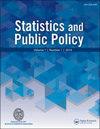EPA is Mandating the Normal Distribution
IF 1.5
Q2 SOCIAL SCIENCES, MATHEMATICAL METHODS
引用次数: 2
Abstract
Abstract The United States Environmental Protection Agency (USEPA) is responsible for overseeing the cleanup of sites that fall within the jurisdiction of the Comprehensive Environmental Response, Compensation, and Liability Act (CERCLA; also known as “Superfund”). This process almost always involves a remedial investigation/feasibility (RI/FS) study, including deriving upper confidence, prediction, and/or tolerance limits based on concentrations from a designated “background” area which are subsequently used to determine whether a remediated site has achieved compliance. Past USEPA guidance states outlying observations in the background data should not be removed based solely on statistical tests, but rather on some scientific or quality assurance basis. However, recent USEPA guidance states “extreme” outliers, based on tests that assume a normal (Gaussian) distribution, should always be removed from background data, and because “extreme” is not defined, USEPA has interpreted this to mean all outliers identified by a test should be removed. This article discusses problems with current USEPA guidance and how it contradicts past guidance, and illustrates USEPA’s current policy via a case study of the Portland, Oregon Harbor Superfund site. Additional materials, including R code, data, and documentation of correspondence are available in the online supplement.EPA正在强制执行正态分布
摘要美国环境保护局(USEPA)负责监督《综合环境反应、赔偿和责任法》(CERCLA;也称为“超级基金”)管辖范围内的场地清理工作。该过程几乎总是涉及补救调查/可行性(RI/FS)研究,包括根据指定“背景”区域的浓度得出置信度、预测和/或公差上限,随后用于确定补救场地是否达到合规性。美国环保局过去的指导意见指出,背景数据中的异常观测不应仅基于统计测试,而应基于一些科学或质量保证基础。然而,美国环境保护局最近的指导意见指出,基于假设正态(高斯)分布的测试,“极端”异常值应始终从背景数据中删除,因为“极端”没有定义,美国环境管理局将其解释为应删除测试确定的所有异常值。本文讨论了美国环保局目前的指导意见存在的问题,以及它如何与过去的指导意见相矛盾,并通过俄勒冈州波特兰港超级基金网站的案例研究来说明美国环保局当前的政策。在线增刊中提供了其他材料,包括R代码、数据和通信文件。
本文章由计算机程序翻译,如有差异,请以英文原文为准。
求助全文
约1分钟内获得全文
求助全文
来源期刊

Statistics and Public Policy
SOCIAL SCIENCES, MATHEMATICAL METHODS-
CiteScore
3.20
自引率
6.20%
发文量
13
审稿时长
32 weeks
 求助内容:
求助内容: 应助结果提醒方式:
应助结果提醒方式:


